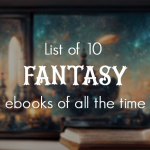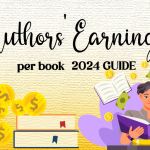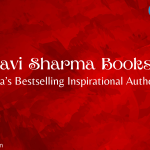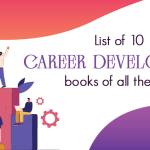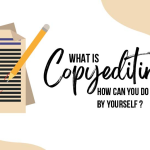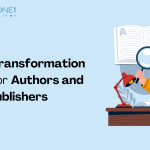The blurb for a book is similar to the teaser trailer for a movie, providing a tantalising insight into the world of the tale and compelling readers to read on. Writing a good blurb is an important talent for both authors and publishers. This blog will walk you through the process of creating an engaging book blurb, whether you’re a fledgling novelist, a self-published author, or just someone inquisitive about the art of blurb writing. We’ll define a book blurb, show samples, and offer practical advice on how to write an engaging blurb that entices people to read on.
What is a book blurb?
A book blurb is a quick, interesting overview of the content of a book that can be found on the back cover or inside flap of a physical book or on the product description page of an online listing. Its major goal is to capture the reader’s attention, pique their curiosity, and give them an idea of what to expect from the book. A well-written blurb delivers enough intrigue and information to pique the interest of potential readers without giving too much of the narrative away. It’s a marketing technique, a sales pitch, and a promise of the adventure or information contained within the pages.
What is a Book Blurb Example?
Here’s an example of a book blurb for a mystery novel:
“In the dimly lit alleys of Victorian London, a brilliant detective races against time to solve a series of gruesome murders. But as the bodies pile up and the clock ticks down, the line between hunter and hunted blurs. In this gripping tale of suspense and intrigue, follow Detective James Winters on a chilling journey through the dark underbelly of the city, where secrets and shadows reign supreme. Can he unravel the mystery before the killer strikes again? Prepare for a riveting adventure that will keep you guessing until the final page.”
You may also like: What is Typesetting? A Beginner’s Guide to Perfect Page Layouts
How Do I Write a Blurb for My Book?
Writing a compelling book blurb requires a mix of creativity and marketing savvy. Here’s a step-by-step guide to help you craft an enticing blurb:
- Understand Your Audience: Understanding your intended audience is critical. Investigate their reading tastes, habits, and genres. Make your blurb relevant to their interests and expectations. Knowing your audience allows you to talk directly to them, increasing the likelihood that they will connect with your work.
- Highlight the Main Conflict: The engine that propels your story’s storyline is the fundamental conflict or dilemma. Make it the focal point of your blurb. By accentuating this struggle, you generate intrigue and suspense, enticing people to read your work to find out how it ends.
- Introduce the Protagonist: Your protagonist will guide the reader through your tale. Give them a quick yet captivating introduction. Share their motives, obstacles, or distinguishing characteristics that make readers care about their path.
- Set the Tone: Tailor your blurb’s wording and tone to the genre and mood of your book. Whether the tone is amusing, suspenseful, or uplifting, reflect it in your blurb. This assists readers in aligning their expectations with the tone of your work.
- Avoid spoilers: While your blurb should provide a look into your novel, resist the need to divulge significant plot twists or the book’s finale. Instead, tease out interesting events without spilling the beans. The idea is to instill a sense of excitement.
- Finish with a Hook: Your blurb’s end should leave readers with an intriguing hook or a thought-provoking query. This motivates people to take the next step and read your book, anxious to discover what lies beyond the blurb.
- Edit and revise: In a blurb, precision and clarity are essential. Edit ruthlessly to keep it succinct and compelling. Remove extraneous information and make sure that every word has a function in captivating readers. Well-crafted blurb editing may considerably improve its efficacy in attracting the attention of potential readers.
You may also like: What is Typesetting? A Beginner’s Guide to Perfect Page Layouts
Who Writes the Blurb of a Book?
Because the author is intimately familiar with their own work, they are usually in charge of drafting the first draught of the book blurb. In the conventional publishing sector, however, a professional editor, marketer, or publisher would often cooperate with the author on the blurb. Self-published writers can also hire a professional blurb writer or editor to guarantee that their blurb is as successful as possible. The ultimate objective is to write a blurb that successfully expresses the substance of the book while also engaging potential readers.
How long does a blurb book take?
The amount of time needed to create a book blurb varies based on factors such as the intricacy of the tale, the author’s experience with blurb writing, and the degree of information requested. In some circumstances, authors may spend only a few hours producing the perfect blurb, while in others, it may take many days or even weeks. It’s critical not to hurry the process because a well-written blurb is an important marketing tool for your book. Take the time necessary to ensure that it properly expresses the core of your work while also engaging your target audience.
What Is the Difference Between a Book Description and a Blurb?
A blurb and a book description serve similar functions but differ in context and length. A book description is a lengthy piece of promotional prose that is often featured on a book’s product page or in marketing materials. It gives a detailed description of the storyline, topics, and characters in the novel. A blurb, on the other hand, is a shorter, more condensed synopsis featured on the book’s cover or back cover, aiming to capture the reader’s attention immediately. While both are intended to lure readers, a blurb is more succinct and teaser-like, whilst a book description provides a more in-depth analysis of the book’s content.
Why is a Blurb Important?
A blurb is important for several compelling reasons:
- Captures Attention: A well-written blurb serves as the first impression of your book. It’s the first thing potential readers see when considering whether to read your work. A captivating blurb grabs their attention, piquing their curiosity and making them want to learn more about your story.
- Generates Interest: The blurb’s primary purpose is to generate interest and intrigue. By highlighting the main conflict or problem of your book, it entices readers with the promise of an engaging narrative. It gives them a taste of the story’s essence, leaving them eager to explore further.
- Conveys Content: In a concise manner, a blurb conveys the essential elements of your book, such as its genre, themes, and central characters. It provides readers with a glimpse into the world you’ve created, helping them determine if it aligns with their reading preferences.
- Helps with decision-making: Readers often use blurbs to decide whether a book is worth their time and investment. A well-crafted blurb assists them in making an informed decision about whether to purchase or borrow your book.
- Sell Your Book: An effective blurb is a marketing tool. It serves as a sales pitch for your book, influencing potential readers to take the next step, such as clicking “Buy Now” or borrowing from a library. A compelling blurb can lead to increased book sales and a broader readership.
- Sets Expectations: By conveying the tone, mood, and style of your book, a blurb helps set readers’ expectations. When readers know what to anticipate, they are more likely to enjoy and appreciate the story, leading to positive reviews and word-of-mouth recommendations.
- Differentiates Your Book: In a crowded market, a well-crafted blurb can set your book apart from the competition. It highlights what makes your story unique, encouraging readers to choose it over other options.
- Establishes Author Credibility: For new authors or those with a growing readership, a compelling blurb can contribute to establishing credibility. It demonstrates your storytelling skills and your ability to craft an engaging narrative.
In conclusion, a blurb is a strong tool for attracting people, stimulating curiosity, and finally encouraging them to read your book. It is an important part of efficient book promotion and may have a big impact on the success of your literary work.








